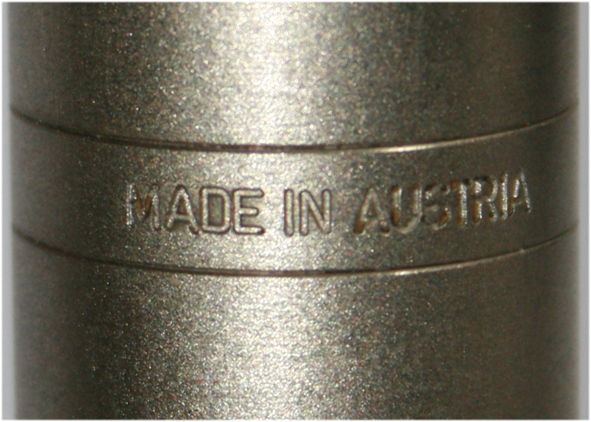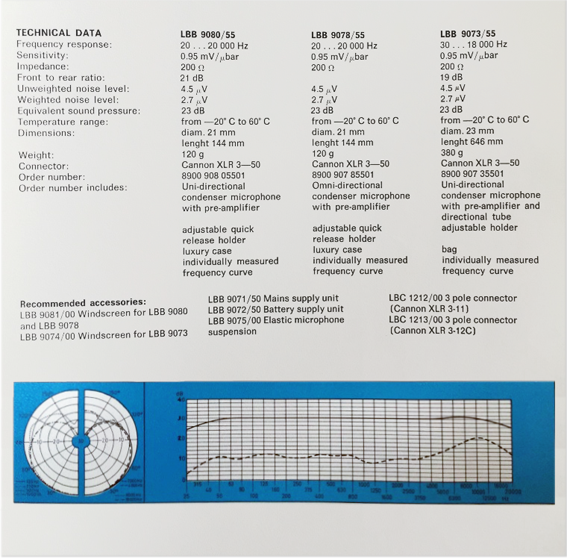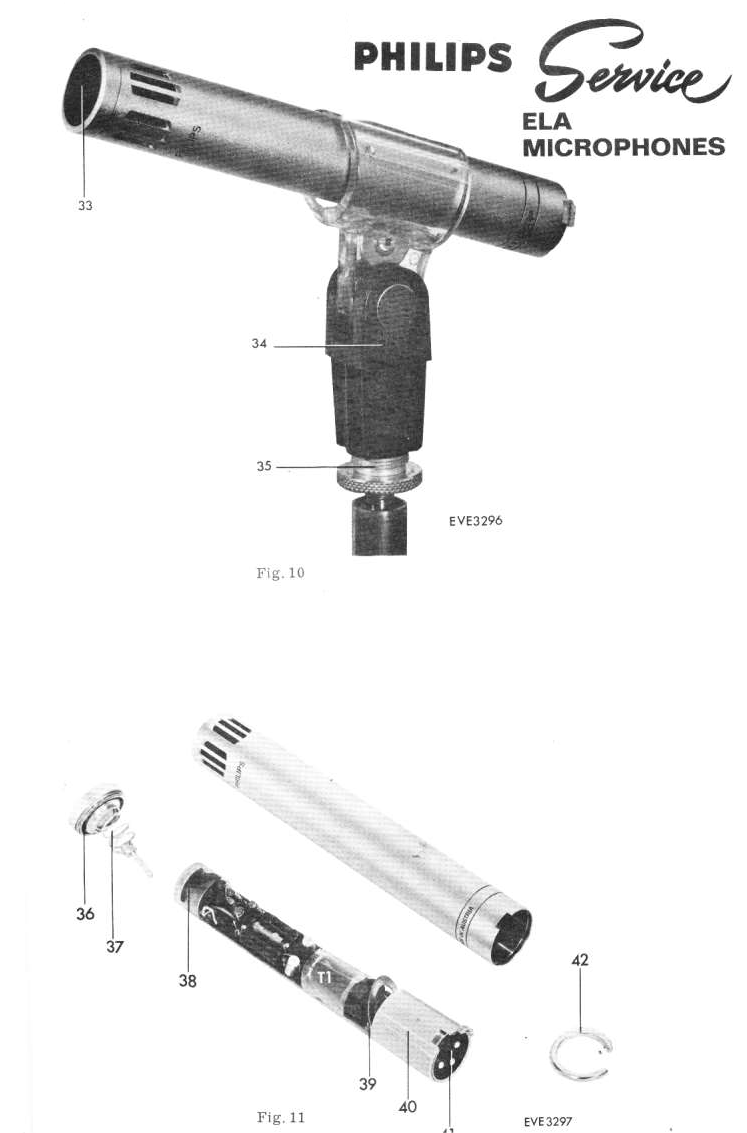|
The Dutch company Philips never made condenser microphones, but did sell them, in the fifties the first models came from Schoeps, later from AKG, of which Philips owned a large percentage of shares.
These types built by AKG in Austria were slightly different in design from the originals on which they were based.
The LBB 9080/55 is part of Philips' last high-quality studio condenser microphone series, which the Dutch company released, in 1971 en was made until May 1973.
The design of this directive type was based on the engineering of the modular AKG C 451 FET preamplifier, from 1968, which formed the basis for the CMS system (Condenser Modular System), and the directional CK 1 capsule.
It had a unique Philips design, that made the LBB 9088/55 microphone an outsider at the time, since Philips chose to release the microphone in a non-modular version.
There were two other variants available: the omnidirectional LBB 9078/55 and the long directional shotgun microphone LBB 9073/55 (similar to the AKG C 451 with the CK 2 and CK 9 capsules).
Philips decision not to release their own version of the popular modular system was not such a crazy idea, because the weak point of the AKG C 451 system was precisely the vulnarable fine threaded connection between the preamplifier and the capacitor capsules. This made them sensitive to moist, leading to unwanted signal drops and crackling sounds.
The BBC, which used many AKG C 451s, had that screw connection modified, resulting in a more reliable microphone, less susceptible to failure.
In addition, the AKG C 451 was mostly sold anyway in combination with the directive CK 1 capsule, remotely followed by combinations with CK 2 omni and CK 9 shotgun capsules; Philips had the most popular choices covered.
Like the original CMS system, the LBB 9080/55s were powered by a dedicated dual power supply: the LBB 9071/50 (same as the AKG model N 46E). It delivered 12 volts of phantom power to two channels which had two position bass roll-off switches. For mobile use, there was a battery power supply, the LBB 9072/50 (same as AKG's B 46E).
The LBB 9080/55 with its more sturdy housing was slightly heavier than the AKG C451/CK1 combination: 117 grams against 92 grams.
The microphones were intended for professional use for tv, in the studio or on location. Not many of them were probably made and sold, but like the AKG C 451/ CK1s they are still highly respected and used with excellent results.
Philips would later build a series of electret microphones in the Netherlands: the BPE series, which had a lesser sound quality and were more substantial in size. Those also never became popular, but were the last to be made for semi-professional purposes.
Many more types feature in my book Witnesses of Words.. More information about that can be found at www.witnessesofwords.com
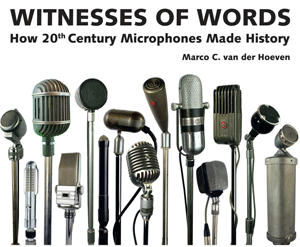
|
|
|
|
|
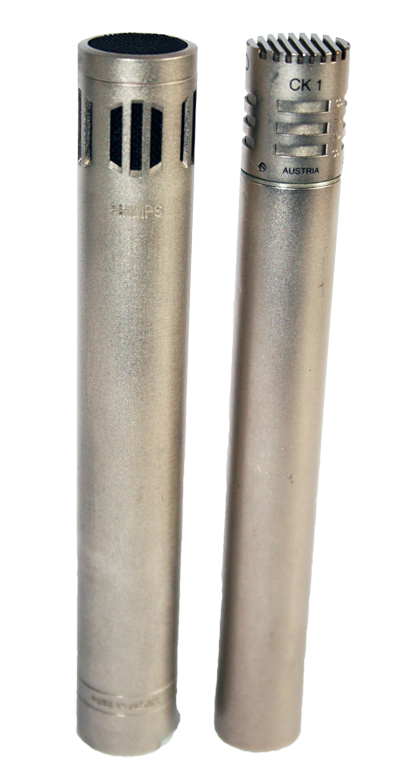
|
|
Top: the alternatively shaped LBB 9080/55
Middle: engraving at the base, specs of the 3 types and LBB 9080 with AKG C451/CK1
Below: the 2 channel power supply LBB 9072/50, sound and the service manual
|
|
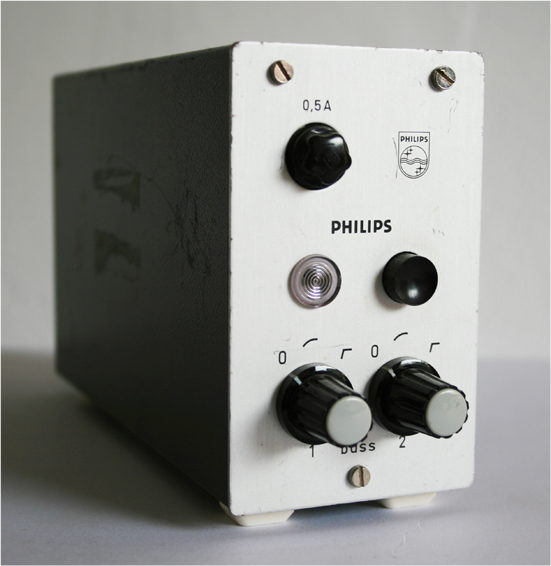 |
|
|


 Video's
Video's Contact
Contact



